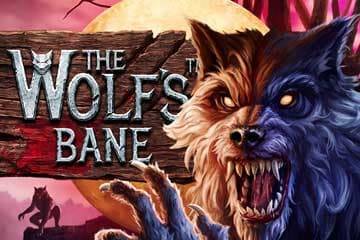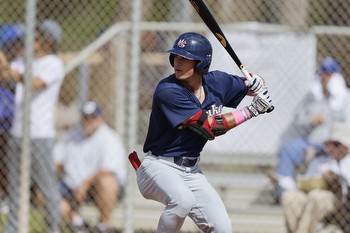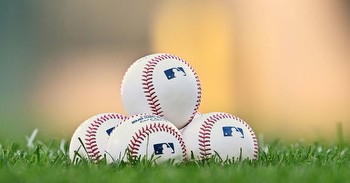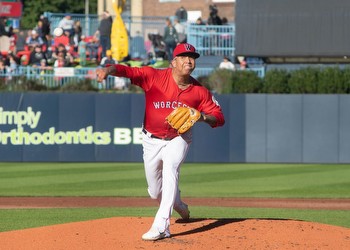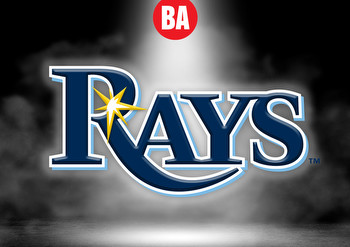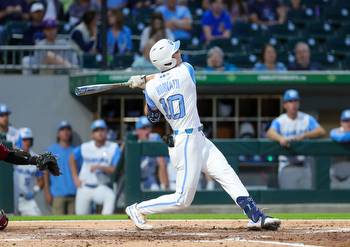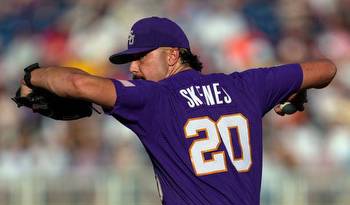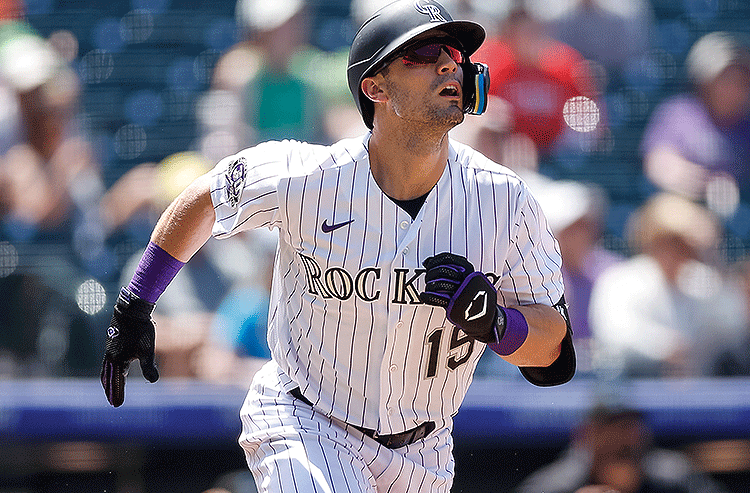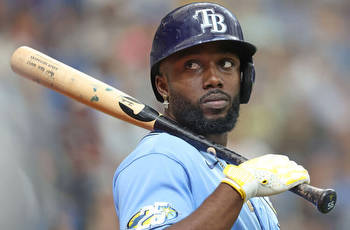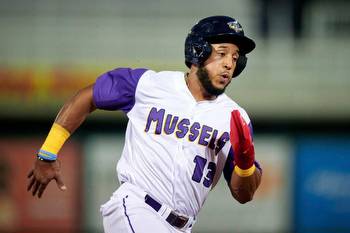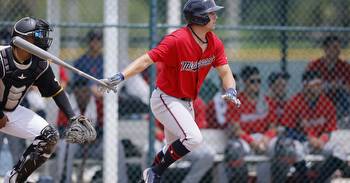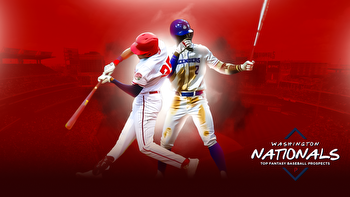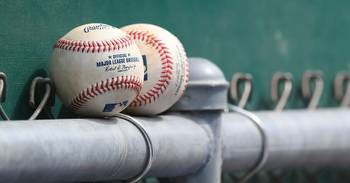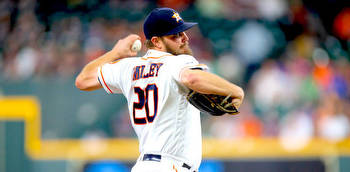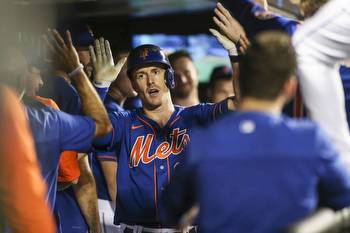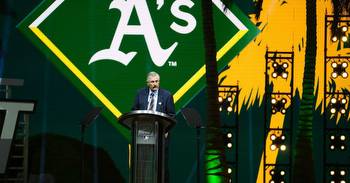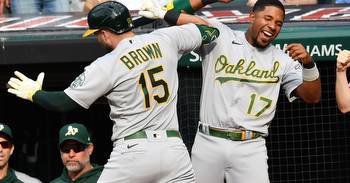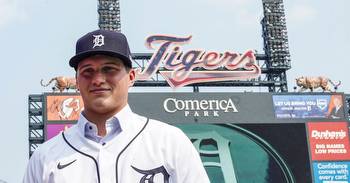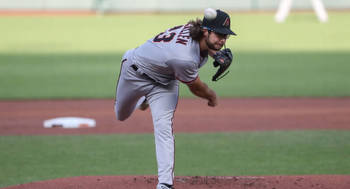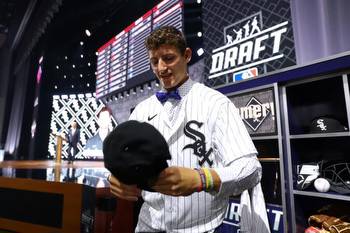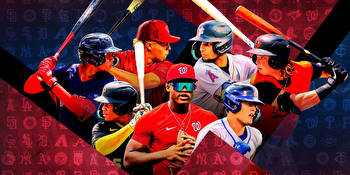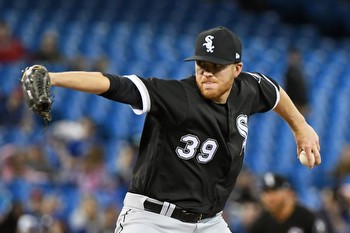Royals top 20 prospects 2023: Keith Law ranks Kansas City’s minor league farm system
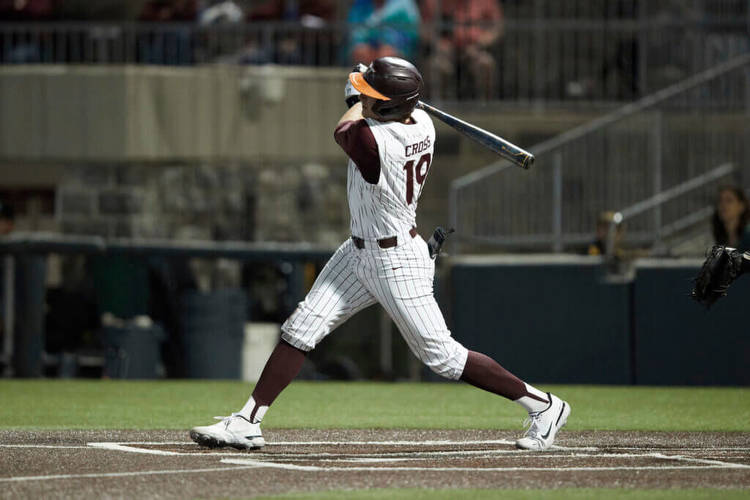
The Royals only placed one guy on the top 100, but that’s misleading when it comes to the whole system, which offers a strong mix of upside and probability, hitters and pitchers, and help that’s near-term with higher-ceiling guys who are farther away.
MLB prospect rankings 2023: Keith Law’s complete guide to every farm system
The ranking
1. Gavin Cross, OF (Top 100 ranking: No. 57)
Cross was one of the best hitters in Division I last year, part of a loaded Virginia Tech lineup that had four guys drafted in the top five rounds, and then absolutely went off in his pro debut, with seven homers and 22 walks in 26 games for Low-A Columbia. He looked more like a polished hitter who might have some power in the spring, showing a strong approach and generally good feel for the barrel, but over the summer he showed better bat speed and more impact when he squared it up, so his power ceiling might be closer to 30 homers than the 20-ish expected of him when he was an amateur. He’s a center fielder now but more likely to end up in a corner, with good reads but probably not the speed or first-step quickness to stay up the middle. It’s a tiny sample from after the draft, but if that power spike is sustainable, you could play him at left tackle and it wouldn’t matter. The Royals needed to get some quick impact from the 2022 draft, and the very, very early returns say they might have done it.
2. Nick Loftin, OF/2B (Just-missed list)
Loftin does a little of everything, making contact, hitting with sneaky pop (17 homers last year), running plus (29 steals in 35 attempts), playing center field and second and third and still a little shortstop, but maybe not enough of any one thing to be a top-100 prospect. He also struggled in Triple A to end last season, a function of his wearing down over the course of the season, so he lost some bat speed and some power. He’s normally a selective hitter with good pitch recognition, and could be a 15-20 homer guy in the big leagues with speed and the versatility to play pretty much anywhere but behind the plate. He’s supposed to have worked to add some muscle this winter so he can hold up for the entire season, and if he does, he could really help this Royals team as a super-utility guy who gets 500 at-bats or even their starter at second base.
3. Ben Kudrna, RHP
Kudrna was their second-round pick in 2021, earning a first-round bonus, and right now he’s the best of the prospects they took in that draft class. He works 94-96 mph with a slider that shows plus and is developing a changeup, but nothing is that consistent yet, including the delivery. He’s built like a mid-rotation starter, needing to work on repeating his delivery to get to that level so he can improve his fastball command and turn that slider into a consistent out pitch. It’s all in there.
4. Cayden Wallace, 3B
The Royals’ second-round pick out of Arkansas, Wallace makes very hard contact and turned out to be a strong defensive third baseman last spring, with a plus arm and good hands to profile as at least a 55 defender there in the majors. He needs to work on pitch recognition, showing particular trouble with changeups in college, and on making better swing decisions to get to stuff he can drive. He has an above-average regular ceiling that might see him hitting more doubles with a high average rather than hitting 20-odd homers.
Age:
Bats: Right | Throws: Right
International signing in 2016
If Garcia had even average power, he’d be a top-100 prospect. He’s got an unorthodox swing and setup, even stepping in the bucket, but he gets the bat to the ball very consistently and shows solid pitch recognition already. He’s a 55 defender at short who can move around the infield, giving him some immediate value as a utility guy, although if he adds any strength as he gets to his mid-20s he might end up a regular somewhere.
6. Tyler Gentry, OF
Among all of the hitting prospects the Royals have helped in the last few years, Gentry gets overlooked quite a bit, but he’s gone from someone who might have been an extra outfielder to a potential regular thanks to a massive improvement in his approach to at-bats. A knee injury ended his 2021 season early, and he whiffed 30 percent of the time in Low A as a college product, which put him off my top 20 entirely. He spent most of 2022 in Double A, cut his strikeout rate to 20 percent, and finished with a .321/.417/.555 line at the level at age 23. He’s a 55 runner with 55 power and now has a much better feel to hit. I don’t think he’s a .300/.400/.500 guy in the majors — if I did, he’d be in the top 50 — but I do think he’s a solid regular, and maybe as soon as the second half of this year.
7. Carter Jensen, C
Jensen was supposed to be a bat-first catcher who might not stay at the position, but he’s turned out to be a strong defender who draws a ton of walks but has a lift-and-pull approach that’s holding down his batting average. He’s always had the plus arm, but he’s a bigger-bodied kid and it got in the way of his blocking and receiving. Since the Royals took him in the third round in 2021, though, he’s improved in both of those areas as well as his conditioning, and scouts were comparing him to college products with how advanced his defense was. At the plate, he’s got 60 or better raw power, but he’s trying to pull everything, so while he had great plate discipline stats — 83 walks and 103 strikeouts in 485 plate appearances — he hit just .227 with 11 homers, way out of line with how hard he’s capable of hitting the ball. If the Royals can get him to use the whole field more and let the homers come as a natural consequence, they could have a star.
8. Luca Tresh, C
Tresh had a hamate injury in 2020 that may have lingered a little into his draft year in 2021, when he hit .231/.310/.476 for NC State, pushing him from a probable top three rounds selection to out of the top 10 rounds entirely. The Royals took a flier on him in the 17th round, worked hard from the get-go to sign him, and eventually agreed to terms with him on a $423,000 bonus, well below what he might have gotten after a healthy, productive spring. He’s got plus power and a plus arm, but the best news in his 2022 was that he made more contact at both High A and Double A, hitting .269/.360/.468, mostly at the lower level, with a 24 percent strikeout rate, more than enough to see him at least becoming a good backup. If he carries this through a whole year in Double A, I’d be more comfortable calling him a solid regular.
9. Frank Mozzicato, LHP
The Royals took Mozzicato seventh overall in 2021, paying him well under the slot value of the pick so they could go over slot with Kudrna and Jensen, and they still had enough room left in their pool to sign Tresh, so even if Mozzicato doesn’t become what the Royals hoped, they’re likely to still end up with a great draft class. Mozzicato is a projectable lefty with a plus curveball and a good delivery, but we’re waiting on the velocity to come — he was 88-92 mph much of the year, sometimes 86-90 and sometimes 90-94, although hitters do miss the pitch more than you’d expect. He’s working on a changeup, which has a chance to be average in time. The real issue in his pro debut in 2022 was that he wasn’t in the zone anywhere near as much as he should be with his delivery and stuff. He walked exactly one of every six batters he faced last year, and that doesn’t work if you’re throwing 97 with a hammer. There’s no mechanical reason for this, and maybe if the stuff ticks up a little he’ll be more confident in the zone. It’s just all projection now, with the hope of a fourth starter.
10. Peyton Wilson, OF
Wilson hurt his hamstring on the last day of spring training, missing about three weeks of April and running cautiously until later in the season — he stole 23 bases on the year in 24 attempts, but 15 of those came in August and September — so the SB total might really undersell his speed. He’s a 70 runner with a plus-plus arm too, so the Royals have been playing him some in center as well as second base, where he was defensively challenged in college. He’s got a chance to be a regular in center if he doesn’t get too power-happy at the plate, as he has some pop but will be more valuable if he boosts his contact rate rather than sacrificing it for a few more homers.
11. Beck Way, RHP
The best prospect of the three the Royals acquired from the Yankees in the Andrew Benintendi trade, Way is a potential fourth starter with a fastball/changeup combo that would play in the rotation and a slider that’s less consistent but could give him a third pitch. His body and delivery say starter, but it’s 45 command at best and he gives up more hard contact than you’d like, so he has some probability of going to the pen, where he might have three above-average or better pitches.
Age:
Bats: Switch | Throws: Right
Drafted: No. 41 in 2017
Waters came over in a trade that sent the Royals’ competitive balance round A pick in 2022 to Atlanta, and ended the year on the Royals’ big-league roster. He’s very athletic, a plus runner who can play center with a 70 arm, and he shows 55 power, but his approach, from pitch selection to offspeed recognition, has always been poor. Major-league pitchers exploited his willingness to chase and his trouble with breaking stuff anywhere. The Royals are probably the best org for him to end up with, given the success they’ve had with improving hitters’ plans and recognition at the plate in the last two years. The odds are against him hitting enough to be more than a fourth outfielder, given just how far he has to go with his approach, but I give the Royals a better chance than almost anyone to fix him.
13. Lizandro Rodriguez, 2B
Rodriguez played 43 games last year in his U.S. debut at age 19, splitting time between the ACL and Low A, and hit .306/.395/.514 with a ton of contact. It’s second base only, but he’s a switch-hitter with some pop, and makes that contact even with a low hand load that might hold him up at higher levels. He’ll have to prove it over a longer season, but he looks like he could develop into a regular.
Age:
Bats: Left | Throws: Left
International signing in 2016
Zerpa’s got velocity and a slider with sharp downward break, but he has almost no deception to the delivery and doesn’t repeat it well enough to be a starter. He has three pitches and could be a valuable bulk reliever or even someone who works in leveraged situations, although it’s a concern that for two straight years he hasn’t really gotten lefties out even as a left-hander himself.
15. Asa Lacy, LHP
Lacy was the fourth overall pick in 2020, with the stuff and size to have been a No. 1 overall pick in some years, but since then it’s been a disaster. He had shoulder trouble in 2021, while in 2022 he lost his delivery, walking 42 men in 28 innings when he did get to pitch. He can still show premium stuff, up to 97 with a slider and changeup that you could call plus if he could locate them at all, but he has no consistency at all to the delivery from start to finish. The pure stuff is still in here but the Royals have their work cut out for them.
Age:
Bats: Right | Throws: Right
Drafted: No. 58 in 2018
Bowlan is finally fully healthy after undergoing Tommy John surgery early in 2021, returning at the very end of last season to make seven rehab starts in High A, although his stuff wasn’t all the way back. Before the pandemic and the surgery, he was a tremendous strike thrower who’d sit 95-96 mph, driving the ball down in the zone but not generating groundballs, with an average breaking ball that had velocity but not big spin or sharp break. He had the three pitches and control to start, assuming it all comes back in 2023.
Age:
Bats: Left | Throws: Left
International signing in 2017
Hernandez is very tooled-out, a 70 runner and true centerfielder who can show average power, and if he develops a more selective approach at the plate, he could be an above-average regular. He’s a long way from that, chasing offspeed stuff out of the zone and swinging generally too often, while he also hits with no stride, just a small toe-tap for timing, which I think may hold back the quality of contact he can make as well. He’s low probability but has a fairly high ceiling.
18. Mason Barnett, RHP
Barnett was their third-round pick in 2022, showing premium stuff, 94-95 mph with two breaking balls that could be above-average, but he doesn’t repeat his overlong arm action and as a result doesn’t throw enough strikes. It’s a good starting point for a pitching prospect but the Royals have a lot of work to do here for a 22-year-old. He did walk just one batter of 24 he faced in his brief pro debut.
19. Andrew Hoffman, RHP
Acquired along with Waters in a trade with Atlanta, Hoffman’s a sort of modern-day junk-baller, missing bats enough with three pitches that are unremarkable by velocity but with good secondary characteristics, showing depth on a slider and good deception on a changeup. I doubt he can start, but as a bulk reliever he could surprise people who doubt the fastball.
Age:
Bats: Right | Throws: Right
Drafted: No. 70 in 2019
Marsh’s year was atrocious — a 7.32 ERA in Double A, allowing 27 homers and 137 hits in 114 1/3 innings, giving up way too much hard contact on his 93-95 mph fastball, although his slider is still a potential out pitch, and allowing lefties to hit .353/.418/.664 off him. I’d just put him in relief in Triple A to start this year and see if he can have an impact there, perhaps getting a little extra oomph on his stuff to compensate for left-handers’ advantage off him.
2023 impact
Waters probably has first dibs on the centerfield job. Loftin might be plan B, or could make the team in a super-utility role. Maikel Garcia could be their extra infielder. Zerpa could end up in the bullpen at some point, or maybe Marsh if the Royals decide to convert him to relief.
The fallen
Erick Peña took home a $3.8 million bonus from the Royals as an international free agent in 2018, but the outfielder has not hit one iota in pro ball, with a .150/.259/.288 line and a 37 percent strikeout rate last year as a 19-year-old in Low A.
Sleeper
Jensen has so many things working in his favor, from position to defense to power to ball/strike recognition, that I think betting on him to make one significant adjustment is the right choice here.
(Top photo of Gavin Cross: Brian Westerholt / Four Seam Images via AP)
